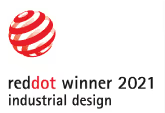“If there is a simple, easy principle that binds everything I have done together, it is my interest in people and their relationship to things.”
— Bill Moggridge

The passing of a design giant
Bill Moggridge passed away on this past September, leaving many of us in the global design community saddened at the loss of not only a great designer, but a great person. He also leaves us with his monumental legacy achieved on two continents, in multiple areas of design—doing it, teaching it, and serving as one of its principal champions over the course of four decades. His influence will live on for at least as many to come.
When we think of industrial design, we tend to think about objects. Objects are, after all, what we shape from our designs. As designers, we envision, sketch, sculpt, CAD, prototype, look at, discard, re-envision, make, drool over, and implement . . . objects. The design process can be so robust at times that it seems that there is little space for thinking about anything but the object. Thus, we often find ourselves, as designers, consumed by objects.
From the German Bauhaus school, whose curriculum and alumni are attributed with founding the modernist approach to product design, to Raymond Loewy, whose career and notoriety catapulted industrial design into the media spotlight, practically all industrial design in the last century has shared a somewhat common, object-centered goal: design something aesthetically pleasing and mechanically functional that can be produced in sufficient quantity to meet market demand. Industrial design’s ideal is thus expressed in an object as the harmony of form, function, and pragmatism. This ideal has been the foundation for thousands of successful products throughout the last century.
However, design must keep pace with and react to the rapid evolution of technology available that integrates with products. And no more rapid an evolution in history took place than the boom of computing—in the workplace, but especially in the home—during the last quarter-century. The computer’s presence in our everyday lives, both obvious and not, is absolutely immense. But unlike virtually all products that came before it, the computer required an entirely different kind of interaction with its users. The computer wasn’t used in a physical sense, it was used mentally—channeling, altering, and delivering information. Suddenly, computers demanded a new design paradigm, a real divergence from the “just make it fashionable and manufacturable” pragmatic mantra. Early computers were notoriously difficult to interact with, and Bill Moggridge, who was involved with the design of some of the earliest consumer computers, certainly took notice.
After graduating from Central St. Martins College of Art and Design in London in 1965, Moggridge set about a career that took design on unforeseen paths of greatness. He went about steadily rejecting the sandy foundation of pragmatic design by showing us that objects are not the center of the design universe—people are. Bill Moggridge wasn’t just a designer who understood the notion of human-centered innovation—he was the man who brought the entire concept to fruition.
You can see Moggridge’s steady hand of evolving achievement on everything from hospital equipment to space heaters and ultimately the personal computer.
Writing about the life and career of Bill Moggridge from an industrial designer’s viewpoint is actually a bit tricky. He was indeed an industrial designer, one of the best; and although I’d love to claim him as a shining example of “one of our own,” it would be just a little inappropriate. And only because Bill Moggridge transcended any normal terms you could place on a designer—it’s sort of like saying, “Yeah, that’s Michael Jordan, the basketball player.”
Moggridge is transcendent, not just for pioneering a human-centered approach in design, but also for pioneering interaction design. Thus his influence hit new levels, since most of the recent notable advancements in the design field have come from the realm of interaction design. Many can credit Moggridge as the John the Baptist of computing, since he designed the form factor for the Grid Compass personal computer—a forerunner species to the Apple Macintosh and others. He realized that the most important parts of these devices were those that connected the user to the software, thus defining the user experience for the device.
Bill Moggridge, too, was the ultimate collaborator. He understood that other people’s ideas, coming from both industry experts and consumers, were just as important in the design process as his own, and that the combination and synthesis of all of these ideas are what gives design its magic. With diverse ideas and complex teams behind every design, Moggridge saw that the shared process is far more powerful than the individual mind. This consideration during the design process identified emotional and psychological connections that people had, or could potentially have, with products. He never left design simply limited to the aesthetic.
Bill Moggridge gave us so much, and for so much we are grateful in the design community. He gave us our vision and our perspective, a brash new pursuit of our technical abilities, and, at his very core, our inspiration fueled by constant collaboration—two of the bedrock values designers hold dear. He saw himself as a guy who lived his life in phases, as a designer, team leader/design manager, and communicator/storyteller. He lived design, and he championed it—as an everyday practice and as a phenomenon of human achievement. And he did this for me.
Thanks, Bill. Rest in peace.



